Green anarchy vs. eco-fascism
Written by Paul Cudenec on for winter oak
“We have realized that a detachment of man from Nature, from the Life-Whole, leads to his annihilation… No longer does man alone stand in the centerpoint of thinking, but rather Life as a Whole does, as it reveals itself in all living things on earth”.
On the face of it, this statement sounds rather good. It’s the sort of thing we send out on our Winter Oak “Quote for the Day” tweets.
But in this instance, we definitely won’t be doing that. Why? Because it comes from a 1934 book called Biological Will: Means and Goals of Biological Work in the New Reich by Ernst Lehmann, a leading Nazi biologist. (1)
Others are taken a lot more seriously when they warn that a radical political philosophy which is too nature-based inevitably risks carrying us down into a dark underworld of proto-fascist ideology.
The occasional similarity in vocabulary or rhetoric between radical eco-anarchist thought and a certain strand of Nazi ideology has long provided a source of ammunition for enemies of radical green thinking.
Sometimes these attacks amount to little more than laughable right-wing propaganda, as with a 2018 item (2) on the Encounter Books website focusing on the “totalitarian roots” of the green movement as a whole and, in particular, of wind power.
Others are taken a lot more seriously when they warn that a radical political philosophy which is too nature-based inevitably risks carrying us down into a dark underworld of proto-fascist ideology.
While Murray Bookchin was no doubt right to take elements of the American deep ecology movement to task for not fully recognising the social roots behind ecological problems, the rhetoric he deployed, condemning what he regarded as “ecofascism”, has ultimately only increased the perceived Nazi contamination of radical green thinking in general.
Fellow social ecologists Janet Biehl and Peter Staudenmaier carried on his approach with great enthusiasm. In Ecofascism: Lessons from the German Experience, they wrote: “The National Socialist ‘religion of nature,’ as one historian has described it, was a volatile admixture of primeval teutonic nature mysticism, pseudo-scientific ecology, irrationalist anti-humanism, and a mythology of racial salvation through a return to the land. Its predominant themes were ‘natural order,’ organicist holism and denigration of humanity: Such arguments have a chilling currency within contemporary ecological discourse”. (3)

More recently, Alexander Reid Ross, a one-time editor of Earth First! Journal, has identified parts of the EF! network, as well as anarchists and left-wingers generally, as being affected by what he terms ideological “fascist creep”. (4)
There are plenty of other examples out there, plus, it should be added, actual attempts by sections of the far right to hijack environmental positions and language for their own ends. (5)
All of this has, of course, not been without an impact on the thinking of the broader environmental movement.
Sensitive to comparison with Nazi policies, Germany’s Green Party has long gone out of its way to stress its rupture from this past.
For instance, in a 1987 interview with the Oxford journal Green Line, party representative Jakob von Uexküll, grandson and namesake of an archconservative behavioural biologist, said that the Greens in Germany had made a conscious decision to seek out allies in minority groups because critics had pointed out that ecological-holistic statements had historically been made by Nazi and Fascist governments. (6)
While forging alliances with minority groups is itself a positive move, the problem lies in the way that ecologists with a social critique find it safer to tack their environmentalism on to an already-existing package of left-liberal thought rather than to source it from what is seen as an entirely discredited green tradition.
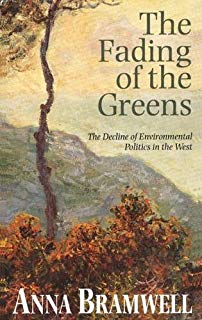
Historian Anna Bramwell wrote as long ago as 1994 that since the Second World War “any talk of holism, or a love of nature that adduced certain values from nature or strove to adapt humanity to those values, was suspect” (7) – and things certainly haven’t improved since then.
We can testify to this ourselves. An article published in 2017 by Winter Oak, Envisioning a Post-Western World, proposing an exit from industrial capitalist ways of living and thinking, was only reposted by the radical American website antidote zine after much discussion and with a disclaimer that some of the arguments we put forward were “right on the knife’s edge”. (8)
The knife in question turned out to be the one being dramatically waved around by Reid Ross, which seems to have successfully intimidated a large part of the anti-capitalist movement in the US, even if some are still brave enough to publish “suspect” ideas in spite of his efforts.
But what is the truth behind this “Nazi” smear against organic deep green ideology? Is it justified? Is it something that should influence the way we collectively formulate our own vision of the world? If so, in what way?
To get to the roots of the matter, we will here be asking, and answering, the following questions:
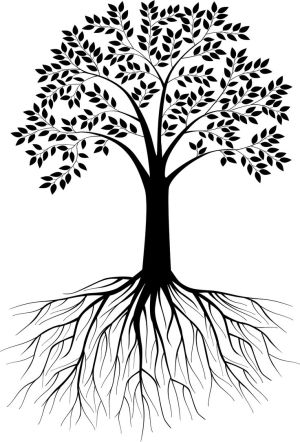
1. What were the origins of this organic thinking?
2. To what extent was this thinking part of Nazi theory and practice?
3. Are there other possible manifestations of organic ideology?
4. What political ideology is the best fit with an organic approach?
5. Is organic radicalism the only target of the contemporary Nazi smear?
6. What is the relationship between anti-capitalism and anti-semitism?
7. So what, do we conclude, is the smear all about?
8. Why do we care so much about this issue?
9. What would we like to see happen next?
1. What were the origins of this organic thinking?
By organic thinking, we mean a vision which regards human societies, as well as the environment, as being essentially alive and of consisting of countless subtle interactions and collectivities which can never fully be described because of their rich complexity.
It regards human beings as an extension of nature. It is a holistic approach, because it understands that everything is connected, everything is ultimately one.
A holistic and nature-based view of the world was the starting point of all human cultures and inspires the indigenous spiritualities of North and South America, of Australia and Africa, and, yes, even of Europe.
It was the foundation stone on which were built the metaphysics of Chuang Tsu, Plotinus and Paracelsus. It remains a widely-shared, instinctive, “common sense” view of the world which has never been completely erased from the human spirit.
The coming of the Industrial Revolution sparked a reaction, in which some people actively sought out and revitalised these old ideas. This was not so much an intellectual movement as an instinctive response to cultural, social and environmental danger.
As Vivianne Crowley writes: “From the late eighteenth century onwards, rapid industrialization and the rape of Europe’s natural scenery and resources caused many people to feel that the time was out of joint; that common sense was being sacrificed to material progress with potentially disastrous results”. (9)
A holistic and nature-based view of the world was the starting point of all human cultures and inspires the indigenous spiritualities of North and South America, of Australia and Africa, and, yes, even of Europe.
The organic thinking on which we are focusing here is this version, the one that emerged in reaction to the trauma of industrialisation, of Western civilization’s drift away from that original wisdom and towards the cold and mechanical philosophies of the modern era.
In a sense it could be termed Organic Thinking II, because it included a conscious defence of Organic Thinking in the face of the sterile dogmas of capitalist modernity. Everywhere affected by industrialisation saw the emergence of anti-industrial currents of thought.
The English-speaking world had the likes of William Blake (1757-1827), William Wordsworth (1770-1850), Henry David Thoreau (1817-1862), John Ruskin (1819-1900), William Morris (1834-1896) and Richard Jefferies (1848-1887).
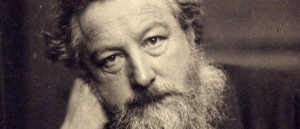
Morris spoke for many others when he admitted in 1894, two years before he died: “Apart from the desire to produce beautiful things, the leading passion of my life has been and is hatred of modern civilization”. (10)
France had its own tradition, which flowed from the anti-industrialism of the eighteenth-century philosopher Jean-Jacques Rousseau (1712-1778) into the twentieth-century anti-productivism of Jacques Ellul (1912-1994) and Bernard Charbonneau (1910-1996) as well as the powerful critique of modernity voiced by George Bernanos (1888-1948), who declared: “The Civilization of the Machines is the civilization of quantity opposed to that of quality”. (11)
German-speaking Europe had a particularly strong concept of Naturphilosophie, intertwined with Romanticism, which could draw on the wisdom of Johann Wolfgang von Goethe (1749-1832), Novalis (1772-1801), Friedrich Hölderlin (1775-1854) and Friedrich Wilhelm Joseph Schelling (1775-1854).
In her book Reenchanted Science: Holism in German Culture from Wilhelm II to Hitler, Anne Harrington traces the evolution of one thread of this thinking from nineteenth-century scientists who developed holistic approaches in their own specific fields and then, as good holists, saw that there was also a bigger picture.
“From Berlin to Prague to Vienna to Zurich, these scientists began to mingle their voices with those of other kinds of cultural critics, would-be reformers, and crisis-mongers. Those other voices from outside the sciences also typically used the oppositional imagery of machine and wholeness in order to articulate what they believed had gone wrong in politics, the community and individual existence – and to identify roads to renewal. That imagery in turn had energetic links to other, overlapping political and societal oppositions of the time: Gemeinschaft (community) versus Gesellschaft (society), an opposition made famous by the nineteenth-century sociologist Ferdinand Tönnies; (German) Kultur versus (French) Zivilization; Life and Soul versus Mind and Reason, a squaring-off associated with such ‘life philosophers’ as Ludwig Klages”. (12)

The starting point of Organic Thinking II was opposition to The Machine and all the damage it was doing to human culture and well-being, as well as to the natural world.
The Machine, which spawned the ugly coke furnaces and iron and steel factories of the Ruhr valley, powered the militarism of Otto von Bismarck, Chancellor of the German Empire between 1871 and 1890.
There was a process of extraordinarily rapid industrialization at the end of the nineteenth century that, notes Harrington, had left many feeling “uprooted and aesthetically revolted”. (13)
And The Machine also reached inside people’s heads, breaking down older ways of thinking and remodelling minds according to the demands of the new industrial civilization.
A fragmentation of understanding was identified by critics of the modern age. Like the living communities replaced by urban dormitories for the factory wage-slaves, everything seemed to be broken down and torn apart.
In the sciences, research was increasingly specialist and narrow, geared towards utilitarian pragmatism rather than a quest for knowledge.
The success of individuals or nations was judged in terms of material wealth, of productivity, rather than in terms of inner integrity or happiness.
A sense of belonging to the land, to the past, to a continuum, was rased by the brutal demands of so-called progress.
An individual’s sense of self was swept away by the depersonalised speed and fury of steam-powered living and, at the same time, any sense of belonging to humanity as a whole was denied by the nationalistic fervour of industrial and imperial rivalry with other Europeans and officially-encouraged contempt for the “inferior” and “backward” peoples of the non-industrialised world.

The realm of offices, factories, newspapers and trains forced people into a state of existence where they seemed to exist purely in their own heads, on the surface of being, and were as cut off from their own bodies, their own physical reality, as they were from the natural world from which they had been separated for the first time in a million years of human history.
Organic Thinking II sought to counter that fragmentation, that separation, on every level, and to reinstate a sense of interconnecting wholeness.
Body and soul were not regarded as separate, but as two aspects of one and the same entity. Likewise with individuals and society – not industrial-capitalist society, of course, but the natural and organic one put forward as a healthy alternative.
Collective groups of people were described as living organisms, themselves forming part of even greater living organisms. Humanity itself was one living entity and part of the living natural world.
None of this was new. All of this had already been known by Organic Thinking I. But the difference here was that the new embrace of this holism was also a pro-active call for the realisation and return of that holism.
Organic Thinking II was a demand for change, for the overturning of shallow, fragmented, dehumanising, nature-destroying industrial society and for the rediscovery of authenticity, community, belonging and wholeness.
2. To what extent was this thinking part of Nazi theory and practice?
There is no doubt that Nazi rhetoric and ideology was partly shaped by the organic thinking that was such an influential counter-current in German-speaking Europe at the start of the twentieth century.

The Nazis painted themselves as being on a mission to put things to rights, to bring about a “great revolution in values”, to restore healthy attitudes towards nature.
Nazi language reflected the idea that human life was, and should be, interlaced with nature. Notes Nina Lyon: “All manner of lengthy compound nouns abstracting this ideal prospered: Erdebundenkeit, the binding or oneness with the earth; Volksboden, the connection of the people with the soil; Bodenständigkeit, or the nature by which life was shaped by earthly forces”. (14)
Nazi professor Friedrich Sander named “the longing for wholeness” as one of the two basic motives behind the movement. He added: “Present-day German psychology and the National Socialistic world view are both oriented towards the same goal: the vanquishing of atomistic and mechanistic forms of thought: vanquishing through organic thinking, in the structure of völkisch life here, in the researching of psychological reality there”. (15)
Lehmann, cited at the beginning of this article, wrote a book, Biology in the Present Life, which included chapters on “individual wholeness”, “transindividual wholeness”, “the cosmos of life” and “völkische wholeness”.
He argued: “This striving for connectedness with all of life, indeed with Nature in general into which we are born – that, so far as I can see, is the deepest purpose and true essence of National Socialistic thinking”. (16)
This holistic tendency even reached down to a practical level. The Nazis promoted healthy eating and wholemeal bread. They were all in favour of homeopathy, herbalism and other natural therapies. There was a herbal plantation at Dachau concentration camp.
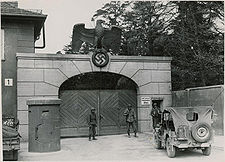
It is the jarring note of that last sentence that reminds us that there was something not quite right about the Nazi love affair with the organic ideal.
In fact, the closer you look, the more it becomes apparent that the Nazi version of organic thinking amounted to a distortion so severe as to render it philosophically unrecognisable. They used holistic and organic thought merely as “a fund of metaphors” (17) with which to present and justify their own totalitarian ideology.
Adolf Hitler himself, for instance, wrote in Mein Kampf that to replace the “dead mechanism” of the liberal state “there must be formed a living organism with the exclusive aim of serving a higher idea”. (18)
It is clearly nonsense to speak of a living organism being “formed”, as any real follower of organic thinking would immediately understand. A living organism could be freed from certain restraints, or even revived, but not formed by the machineries of political will.
The Nazi obsession with order imposed from above, with the absolute rule of the central state, is the opposite of an authentically organic vision.
Hitler is in fact talking about the Nazi state – centrally controlled and ruthlessly hierarchical – to which he is trying to lend an aura of natural authenticity by describing it as an organism in the language popular at the time.
He – and his followers – completely undermined Tönnies’ distinction between organic, bottom-up, community (Gemeinschaft) and artificial, top-down, modern society (Gesellschaft) by pretending that the Nazi Gesellschaft was really a kind of Gemeinschaft. The state and the Führer somehow magically represented the authentic will of the German people.
This notion of the state as organism had already been developed by the right wing of the organic movement, but in Nazi dogma it took on whole new proportions, because the idea of total power resting in the hands of the state was so central to their ideology.
Zeev Sternhell remarks: “Totalitarianism is the very essence of fascism, and fascism is without question the purest example of a totalitarian ideology. Setting out as it did to create a new civilization, a new type of human being and a totally new way of life, fascism could not conceive of any sphere of human activity remaining immune from intervention by the State”. (19)
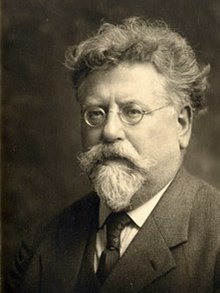
The Nazi obsession with order imposed from above, with the absolute rule of the central state, is the opposite of an authentically organic vision.
As the anarcho-syndicalist Rudolf Rocker wrote: “Dictatorship is the negation of organic development, of natural building from below upwards”. (20)
A further corruption of the organic principle came from what Harrington describes as “the ‘racializing’ of holism’s struggle against mechanism” (21)
The right-wing generation before the Nazis, inspired by Houston Stewart Chamberlain and others, had already formulated the concept of “race”, which broke down humanity into distinct groups – as with the scientific tables and hierarchical classifications of minerals, vegetables and animals which were favoured at the time.
These race theorists, both in France and in Germany, took the philosophical idea of Gestalt, of underlying form, and twisted it into a justification for rigid racial typology. This then fed into a racially-based definition of the social organism which excluded those of whom they disapproved.
Sternhell explains their argument thus: “The nation is a living organism, and nationalism is therefore an ethic, comprising all the criteria of behaviour which the common interest calls for, and on which the will of the individual has no bearing. The duty both of the individual and of society is to find out what this ethic may be, yet only those can succeed who have a share in the ‘national consciousness,’ shaped over the course of the centuries: the Jews, as a foreign race, cannot enter upon this quest”. (22)
The anti-semitic thread incorporated into organic and holistic philosophy by right-wing nationalists became more pronounced in the 1920s. Germans projected on to Jews all the aspects of the German industrial capitalist system that they disliked most – Jews were demonized as being soulless, rootless and mercenary.
It was even said, or implied, explains Harrington, that the very capacity to think and see nature as a “whole” (the art of so-called Ganzheitsbetrachtung) was a trait peculiar to the “Indo-Germanic” mind, while the Jewish mind was fundamentally analytic, dissolutive, and materialistic. (23)
A 1935 article that appeared in the official medical journal of the Nazi party, Ziel und Weg, said the dissolute, sterile nature of Jewish thinking and Jewish science could lead only to “death” and contrasted this with the “simple, organic, creative” thinking of the “healthy non-Jew”, who “thinks in wholes”. (24)
The irony, of course, is that these racist and anti-semitic theories demonstrated that it was the Nazis themselves who were incapable of thinking holistically.
A holistic vision of the world understands the connection between all people, all creatures, all of nature, all of the cosmos and bases its vision on a sense of overall unity.
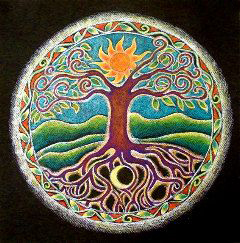
An organic interpretation of the human species necessarily recognises the human species itself as an organism.
There may be lesser, shifting, “organisms” within that unity – and humanity may form part of larger natural and cosmic organisms – but the human species is undeniably the clearest instance of a biological unity between the individual and the bio-system of Earth as a whole.
A sense of this unity is integral to the organic, holistic world-view, and yet it is entirely absent from racist, anti-semitic, Nazi ideology.
The ideas of universalism and humanism were anathema to Nazism and regarded as cosmopolitan Jewish inventions designed to undermine the German sense of national and racial identity.
Their stunted sense of human solidarity was limited to those they defined as being their own people. Anyone outside of that Teutonic enclave was simply a non-person, an object.
Like certain postmodern thinkers of a later era, the Nazis denied the very existence of humankind, which, as Johann Chapoutot points out, “makes fraternity, feeling the suffering of the other, impossible as an emotion and invalidates it as a principle”. (25)
This was what lay behind the cold look in the eyes of the Nazi scientist famously described by Primo Levi in Survival in Auschwitz. He was looking at the Jewish prisoner as if he was observing a sea creature through “the glass window of an aquarium”. (26) There was no sense of human connection.
The anti-semitism displayed by the scientist here is not simply a prejudice, but a prejudice solidified into something self-justifying by a belief in the validity of the Nazis’ pseudo-scientific racial theorising.
Chapoutot says of this racism: “Slavs were presented as such strange beings that no communication of a human kind could be imagined with them. As for the Jews, they weren’t even considered as a foreign race, but rather as a phenomenon of a bacteriological or viral type”. (27)

It was this capacity to regard fellow human beings as mere bacteria which enabled the Nazi state to embark on its inhuman policies of racial screening, sterilization, castration, experimentation and mass extermination.
Far from being inspired from a holistic view of the world, this outlook stems from the very fragmentation of which the proponents of organic thinking complained. This is mechanical thinking.
The Nazis’ approach is marked by a desire not to understand, to include and to connect, but to separate, to classify and to objectivise. As Hitler himself said: “Nazism is applied biology”. (28)
Rather than making a break with the cold, soulless, mechanical age, the Nazis were pushing it on to new levels of inhumanity.
As early as 1933, the psychoanalyst Wilhelm Reich observed that fascism was not about Wholeness at all, but rather was the culmination of modern civilization’s mad worship of The Machine. Fascist man had let himself be transformed into a machine that was alienated from all authentic biological impulses and thus capable of ‘machine murder’. (29)
Much the same point was made in an article by Gerhard Portele in Gestalt Theory in 1979 when he argued that, despite the Nazis’ use of holistic language, the essence of their ideology lay in their neglect of the whole: “The Nazis with their calculating book-keeping rationality were trained in piecemeal thinking to an extreme degree and viewed people as cogs”. (30)
This fundamental incompatibility between organic, holistic thinking and Nazi ideology became increasingly apparent once their romantic rhetoric collided with the pragmatic realities of running the German industrial-capitalist state.
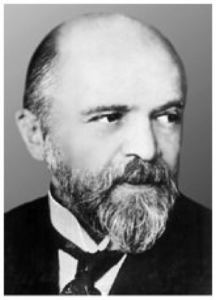
Hans Driesch (1867-1941), a biologist whose organic vision was defiantly internationalist, was among the first non-Jewish German professors to be forcibly retired after Hitler came to power in 1933 and in 1935 all public speaking and travel privileges were taken away from him.
After Germany’s defeat in World War II, a number of other organic theorists, such as the philosopher and historian of biology Adolf Meyer-Abich, came forward to report that they too had been actively persecuted by the Third Reich because of the perceived threats their holism posed for Nazi policies.
The Nazi faction which had twisted organic thinking into a racist and anti-semitic theory was itself displaced by an even more hardline group.
Harrington explains: “The second faction was made up of more pragmatic medical technocrats who wanted to use a hard-nosed form of Mendelian genetics, Darwinism, and racial biology as the basis for Nazi social policy and military strategy. This group had found a home for itself under the jurisdiction of Himmler’s SS and its daughter racial organizations, the Lebensborn and Ahnenerbe”. (31)
Human geneticist Karl Astel and his technocratic colleagues, outraged at the influence wielded by the likes of Karl Kötschua and his “nature therapy”, hatched a plot to discredit holistic views, which, he correctly concluded, flew completely in the face of narrow Nazi theories of racial supremacy.
In the same way as today’s anti-holistic propagandists try to blacken its name by linking it to the Nazis, these Nazis smeared holism by linking it to the Roman Catholic Church.
A 1936 article “exposing” this Catholic plot described “a skillfully organized and well-camouflaged attack on the entire exact sciences, including genetics and racial hygiene”.
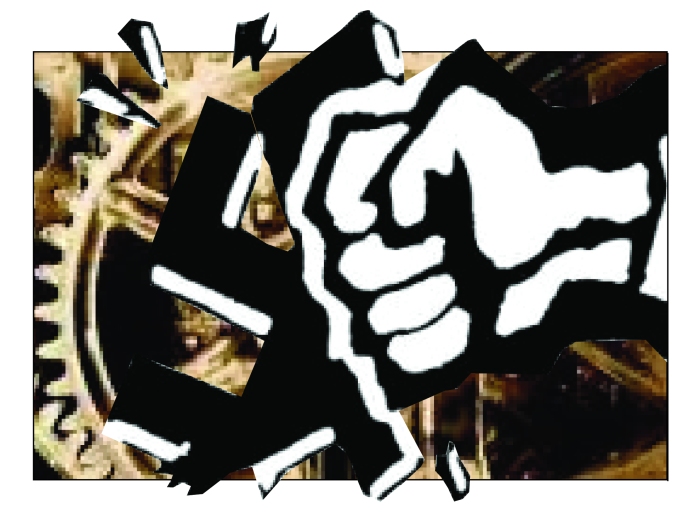
Under the name of holism, it said, sinister Jesuits were using scientific dupes to spread a Catholic doctrine and undermine Nazi science. Their cunning ploy involved making “full intentional use of words that sound National Socialistic, like ‘wholeness’, ‘organic’, ‘biologic’, and so on” in order to spread confusion while appearing to be on-message. (32)
As a result of this propaganda, even Nazi exponents of organic theory were now hounded out of positions of influence. In 1938 Lehmann, previously quoted, was expelled from the Biologen Verband (Biologists’ Organization) which he had headed since 1931 and removed from his position as editor of Der Biologe.
A new organization within the SS was created, the Reichsbund für Biologie (Reich Division for Biology) which, under the direct supervision of the Ahnenerbe and ultimately of Himmler himself, took over the editorship of Der Biologe.
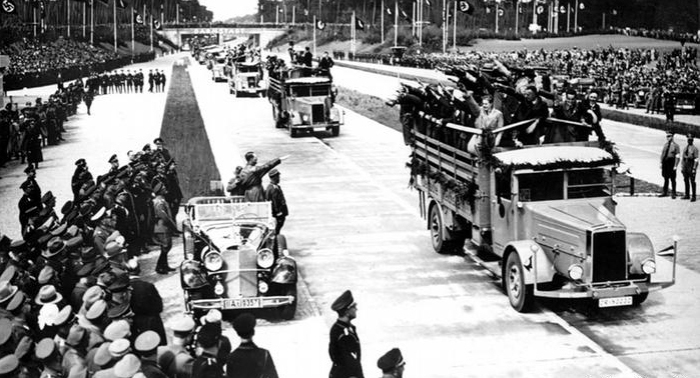
An organic theory of life, with its emphasis on natural harmony, human interconnectedness and symbiotic relationship, stood in stark ideological contradiction to the aims of the Nazi regime, which wanted to build up Germany’s industrial and military power, build motorways, develop scientific racial engineering to strengthen “The Master Race”, explore the potential of nuclear physics, and ruthlessly eliminate “alien” human elements from German society.
The new SS-run version of Der Biologe made it clear that there was no room for the woolly, holistic views of men like Lehmann and the völkisch anthropologist Ernst Krieck, even if they were Nazis and anti-semites. “Biology is research about facts!” it barked in a 1939 editorial.
Facts! This is the language of the atomistic, mechanistic, industrial thinking of The Machine, the very language that the Nazis had claimed to be opposing, at the stage when they were wooing the German population.
From the 1890s onwards, there had been a cultural battle between two German tendencies. On one side stood the tradition of Goethe, of a Romantic desire for life, for soul, for wholeness. On the other side was the new Germany, obsessed with efficiency and Technik, the militarist “machine nation” of 1914.
While Nazism was clearly influenced on one level by the first, Romantic tradition, and happy to use that association to garner support from a German public despairing of capitalist modernity, it proved ultimately to belong firmly to the second.
It incarnated, in an exaggerated form, the thinking of the industrial capitalist Machine, for whom human beings are nothing but fodder. It was not simply a question of racism; even those accepted as German were expected to be “productive”, to serve the purposes of the Machine-State in some way. Non-performing, non-productive Germans (leistungsunfähige Wesen) and scroungers (Asoziale) were not deemed worthy of living in German society.
Because of the hideous crimes committed by the Nazi regime, there is today near-universal agreement that we do not like the Third Reich and its ideas.

But we should be clear as to what it is that we don’t like. We don’t like the mass extermination. We don’t like the anti-semitism and racism. We don’t like the warmongering militarism. We don’t like the blind nationalism. We don’t like the police state. We don’t like the eugenics. We don’t like the propaganda and mass hysteria.
There were other elements present in Nazism which are not among these evils and which do not necessarily pave the way towards them.
Is wholemeal bread a bad thing because the Nazis said it was good? Are herbal plantations insidious because there was one at Dachau? Is all organic thinking suspect because a version of it was harnessed, and distorted, by some Nazi ideologues?
Continuing her discussion of the Nazis’ use of an organic and nature-based vocabulary (see above), Lyon, who describes herself as a Jewish writer, adds: “There is nothing intrinsically problematic about any of these three terms. Their adoption to make the argument that one race of people should be superior to others, because it stemmed from those values and that soil, was where it all went wrong…” (34)
3. Are there other possible manifestations of organic ideology?
As we have already noted in the last section, non-Nazi versions of organic ideology are not only possible, but existed in a very real form alongside the now-discredited right-wing racist variety.

Harrington correctly points out that it is useful to know something about the history of German holistic science, in order not to fall into the trap of thinking that any alternative to the prevailing mechanistic worldview is to be avoided because it somehow points inevitably towards fascism.
She adds: “It is important that we resist ‘discovering’ the outline of a terrible future in holism’s past or imagining that all holistic, vitalistic, or teleological views of nature are part of a larger ‘destruction of reason’ that can be tracked in some straight, degenerating line from the romantics to Hegel to Nietzsche to Hitler”. (35)
Sometimes these investigations might lead simply to the revelation that a particular scientist or thinker was not actually a Nazi. The biologist Jakob Von Uexküll, for instance, was certainly very conservative, politically, but was no white supremacist: he argued that all human groups must be respected in their distinctiveness, because all in the end are expressions of the same creative life energy. (36)
At other times, it goes a lot further than that and we see the enormous ideological potential in variants of the organic theme which point in a libertarian, humanist, internationalist, left-wing direction.
Driesch, for example, defended an ideal of cultural cosmopolitanism and rejected any idea that a nation-state could be seen as an organism. The only supra-personal collective organism he was prepared to consider was the concept of a humankind that recognised no national or völkisch boundaries.
Before Hitler came to power, Driesch had been warning, both in academic and newspaper articles, of the dangers of the growing nationalistic mood. To counter this, he stressed the biological unity of the human species. He also voiced his opposition to militarism, describing this as the “the most terrible of all sins” against the vitalistic principles of life, holistic cooperation and higher development. (37)
The Russian-Swiss neurobiologist Constantin von Monakow (1853-1930) also developed a holistic and organic theory which retained its logical coherence by talking about interconnected wholes, rather than veering off into the fragmented and divisive particularism of Nazi dogma.
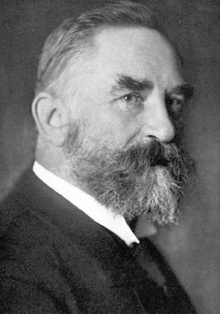
Monakow came up with the idea of the horme, a kind of all-pervading intrinsic motivating and guiding force. He explained: “The horme is nothing other than the activity of the universe (Worldhorme), within which we human-children are highly organized necessary parts. As such we are temporally and partly also spatially – through free mobility – closely bound up with one another: we form ties with animals and plants and also with nonorganic bodies, into which last we merge after death. There is an undeniable glory in the thought that an indelible temporal bond links us, not only with our ancestors and our descendants, but above all also with the whole rest of the organic world”. (38)
He interpreted our relationship to the outside world in terms of expanding concentric circles of awareness. The most basic level of existence involved a preoccupation with self and survival. This was often extended to a focus on family and the immediate community around the individual.
But more evolved human beings could grasp their belonging to increasingly larger entities, up to the human species, the organic world and the cosmos.
Monakow’s holistic vision of all life as being enmeshed in one dynamic process of evolution thus naturally involved an internationalist perspective. Nothing else, in fact, would have made sense in that context.
He saw that to heal itself and set itself back on its true evolutionary course, humanity had to trust in its deepest biological impulses. All the wisdom we needed to find that course was already within us, but stifled by the constructs of modern society.
It also placed him in opposition to the thinking of an industrial age which rejected any idea of organic subject-to-subject relationships with fellow parts of the natural organism in favour of a subject-to-object relationship based on domination and exploitation.
He saw that to heal itself and set itself back on its true evolutionary course, humanity had to trust in its deepest biological impulses. All the wisdom we needed to find that course was already within us, but stifled by the constructs of modern society. We had to tap into that natural sense of direction and rightness, he said, and realise that every tiny living fibre inside us is “so much more wonderful than all the wonders of technology and a thousand times more clever”. (39)
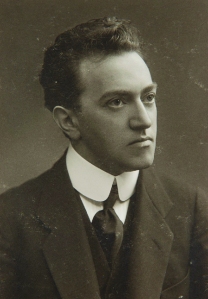
One of the most enthusiastic advocates of Monakow’s approach was Kurt Goldstein (1878-1965), a Jewish socialist critic of modernity, who set out to combine holistic and organic German philosophy with the values of reason, democracy and individual freedom.
Throughout his life, he warned against the dangers of applying narrow, fragmented scientific ways of thinking to other realms.
He wrote in an unpublished 1965 paper: “The progress by the application of science to all fields, also those which are related to the spiritual side of man, as education, psychology, sociology, etc, seems to be so enormous that somebody who today dares to oppose even a little this trend and warns against the fateful consequences for human existence is considered either stupid or uneducated, irresponsible or prejudiced”. (40)
From Goldstein’s holistic perspective, everything was interconnected, outside and inside the individual human being. The words ‘mind’ and ‘body’, for instance, did not point to genuine entities but were just ‘symbols’, human abstractions, denoting different aspects of an overall organic reality that could not in fact be divided.
He has been described, by Ruth Nanda Anshen, as having introduced “a new doctrine of organism which may be said to be taking the place of the materialism with which, since the seventeenth-century, science has enmeshed philosophy”. (41)
The psychologist Max Wertheimer (1880-1943), took Goethe as a starting point, developing the idea of Gestalt, or underlying form, in a promising direction far removed from the dead-end of racism into which the Nazis tried to divert it.
Born in Prague, he fled central Europe before Hitler came to power and continued his work in the USA, later becoming an American citizen.
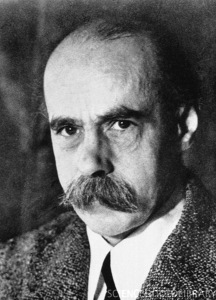
While the Nazis claimed piecemeal or fragmented thinking was a Jewish trait, Wertheimer, who was himself Jewish, turned this round against them. He argued that the modern world had cropped humanity’s thinking capacity. Piecemeal thinking – strings of propositions torn from their original living context – was being used by demagogues and certain intellectuals to hoodwink people into accepting their ideas.
In the 1934 essay ‘On truth’ he distinguished between truth and mere facts. Facts (as fetishised by the SS biologists – see above) meant nothing on their own. Truth was a holistic understanding of the significance of various facts in the wider context of their relationship to one another and to a larger whole. He wrote: “A thing may be true in the piecemeal sense, and false, indeed a lie, as a part in its whole”. (42)
Wertheimer judged that the key concepts of truth, ethics, democracy and freedom were all under attack from contemporary academic thinking, influenced by positivism, pragmatism and cultural relativism. Indeed this anti-holistic stance had itself helped prepare an intellectual field in which it had become possible for the Nazis to succeed.
In an essay on ethics, he took a critical look at ethical relativity which – like the Nazis with their German/Aryan particularism – denied the existence of ethical universals.
As a believer in the organic unity of humankind, Wertheimer disputed this and insisted that experience showed that most people, “when faced with clear, actual injustice”, responded spontaneously in ways that human beings would universally consider decent and ethical. (43)
Gestalt psychology, which Wertheimer developed along with Kurt Koffka (1886-1941) and Wolfgang Köhler (1887-1967), was an influence on the anti-capitalist Critical Theory of Herbert Marcuse (1898-1979), Max Horkheimer (1895-1973) and the Frankfurt School in general.
The organic and anti-mechanistical approaches taken by Jewish thinkers like Wertheimer and Goldstein illustrate the fact that there existed a broad anti-industrial current in German-speaking Europe which was not simply non-Nazi, but anti-Nazi, and whose fundamental principles placed it in direct opposition to fascism.
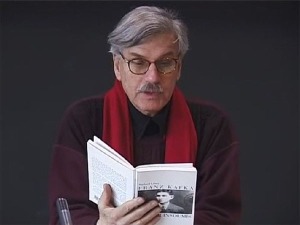
The French-Brazilian sociologist and philosopher Michael Löwy has explored in depth the intellectual movement, mainly Jewish, which he terms “anti-capitalist Romanticism”.
Löwy writes: “In many respects, the Jewish intellectuals of Mitteleuropa, in the utopian-Romantic movement, grouped around Martin Buber’s review Der Jude, expressionist publications (such as Die Aktion), the Bar-Kokhba circle in Prague, the Frankfurt School or various left-wing parties, set themselves apart from Western or Eastern European Jewish intellectuals, as well as from their peers, the ‘gentile’ intellectuals of German culture, by the kind of culture they produced”. (44)
Their vision, he says, revolved around “a cultural critique of modern capitalist civilization in the name of pre-modern or pre-capitalist values” and they were revolting “against the quantification and mechanisation of life, the reification of social relationships, the dissolution of community (Gemeinschaft) and, above all – to take up the terms used by Max Weber – the disenchantment of the world (Entzauberung der Welt) resulting from the instrumental rationality (Zweckrationalität) and the corresponding calculating spirit (Rechnenhaftigkeit) which dominated modern culture”. (45)
The Jewish identity of thinkers like Buber or Gershom Scholem did not stop them drawing partly on the heritage of the German Romantic tradition to condemn the emptiness of modern life and search for a meaning to existence in myth, history or religion.
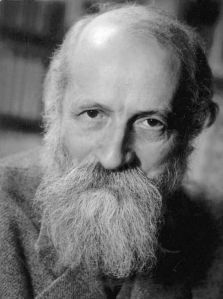
Buber, for instance, put forward a vision of libertarian socialist society inspired by, but not limited by, communities of the past. He wrote: “The new organic whole, founded on the regeneration of the ‘cells’ of the social tissue, will be the renaissance (rather than the return) of organic community in the shape of a decentralised federation of small communities”. (46)
His position was echoed in France by that of Bernard Lazare (1865-1903), a Jewish anarchist who rejected the myth of progress and the allure of the modern in favour of a respect for the past, particularly for medieval guilds or rural communities.
There was nothing reactionary in this opposition to the mass-produced solitude of the modern capitalist world and the desire to revive, in a different form, the organic communities which had been steamrollered by The Machine.
Löwy comments that Lazare was “projecting his Romantic nostalgia for the past into a utopian future, by embracing anarchist ideas”. (47)
Walter Benjamin, for his part, insisted: “The deconstruction of the ideology of progress isn’t carried out in the name of conservation or of restoration, but in the name of revolution”. (48) He pointed out that, in stark contrast, fascism involved the typically modern combination of technological progress and social regression. (49)
From this radical organic perspective, fascism is clearly revealed to be a counter-revolutionary force protecting the industrial capitalist system.
4. What political ideology is the best fit with an organic approach?
A good starting point is the immensely influential German sociologist Ferdinand Tönnies (1855-1936), famous for contrasting Gemeinschaft (traditional community) with Gesellschaft (modern society).
His analysis was not new in itself and could virtually be said to be part of Organic Thinking I, as set out above. It was almost a traditional way of regarding authentic society as being one rooted in the symbiotic human relationships of small-scale community.
Since the Middle Ages, people had been reduced from participants in a generally harmonious, living entity into atomised victims of a system which imposed its demands and laws from above.
But Tönnies’ own experience was shaped by the mechanisation and commercialisation of the German society in which he lived. His theory was very much a political response to industrial capitalism and therefore part of the ideological wave we have termed Organic Thinking II.
It is clear throughout his best-known work, Community and Society, as well as in Geist der Neuzeit, that Tönnies regarded the Western transition from Gemeinschaft to Gesellschaft as a social and cultural decline rather than a triumph of progress.
Since the Middle Ages, people had been reduced from participants in a generally harmonious, living entity into atomised victims of a system which imposed its demands and laws from above.
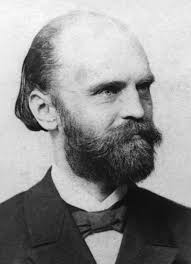
Tönnies spelled out clearly the difference between the two ways of living: “There exists a Gemeinschaft of language, of folkways or mores, or of beliefs; but, by way of contrast, Gesellschaft exists in the realm of business, travel, or sciences… Gemeinschaft is old. Gesellschaft is new as a name as well as phenomenon”. (50)
The term “organic” is used frequently, and always in a positive sense, by the sociologist and is placed in direct contrast with the word “mechanical”.
He writes, for instance, in Community and Society: “In contrast to Gemeinschaft, Gesellschaft is transitory and superficial. Accordingly, Gemeinschaft should be understood as a living organism, Gesellschaft as a mechanical aggregate and artifact” (51) and adds that “the tendencies and inevitableness of organic growth and decay cannot be understood through mechanical means”. (52)
Tönnies subscribes to the holistic view of the human being, writing: “The conclusion is drawn that the soul (or the will) influences the body. This is impossible as both are identical”. (53)
He puts forward the idea of “natural will”, a kind of individual manifestation of Gemeinschaft – innate, organic and artistic – as opposed to the “rational will” of increasingly artificial modern society.
Tönnies refers to “the masterly analysis of Karl Marx”, (54) one of his principal influences, and clearly presents a left-wing anti-capitalist version of organic ideology – it was not for nothing that he was ousted from his long-term presidency of the German Sociological Association when the Nazis took power in 1933.
He explicitly equates Gesellschaft, the opposite of his organic Gemeinschaft, with capitalism. “The merchants or capitalists”, he writes, “are the natural masters and rulers of the Gesellschaft. The Gesellschaft exists for their sake. It is their tool”. (55)
The move to Gesellschaft “meant the victory of egoism, impudence, falsehood, and cunning, the ascendancy of greed for money, ambition and lust for pleasure”. (56)

The city, for Tönnies, is the epitome of the soulless, artificial, capitalist modern world: “The city is typical of Gesellschaft in general… Its wealth is capital wealth which, in the form of trade, usury, or industrial capital, is used and multiplies. Capital is the means for the appropriation of products of labor or for the exploitation of workers”. (57)
Alongside his critique of how mercantile relationships – capitalist society – destroy authentic communities, comes a scathing condemnation of the modern state.
The state, says Tönnies, “is nothing but force” (58) and totally opposed to the “folk life and folk culture” (59) which underpin the cohesion of Gemeinschaft, suppressing all possibility of “a natural order in which every member does his part harmoniously in order to enjoy his share”. (60)
The common people are all too aware that the state acts against their interests, he says, and effectively stops them existing as an organic entity.
“The state is their enemy. The state, to them, is an alien and unfriendly power; although seemingly authorized by them and embodying their own will, it is nevertheless opposed to all their needs and desires, protecting property which they do not possess, forcing them into military service for a country which offers them hearth and altar only in the form of a heated room on the upper floor or gives them, for native soil, city streets where they may stare at the glitter and luxury in lighted windows forever beyond their reach! Their own life is nothing but a constant alternative between work and leisure, which are both distorted into factory routine and the low pleasure of the saloons. City life and Gesellschaft down the common people to decay and death…” (61)
The common people are all too aware that the state acts against their interests, he says, and effectively stops them existing as an organic entity.
This understanding of the state as an artificial entity which claims to embody community, but in reality kills it, is very much part of the classical anarchist tradition, particularly when combined with Tönnies’ class awareness and fundamental rejection of the capitalist mindset.

The idea of an organic community, Gemeinschaft, which is prevented from flourishing because of the state, is in fact essential to the anarchist argument.
Opponents claim that doing away with the state would lead to chaos, but anarchists maintain that this is not the case, because people have a natural capacity (even if this is not realised) for living harmoniously and cooperatively outside of any state hierarchy.
The anarchist vision is inherently organic, because it is based on the concept of free and authentic communities as living, collective entities.
Theodore Roszak draws attention to this in Where the Wasteland Ends, noting: “Anarchism has always been, uniquely, a politics swayed by organic sensibility; it is born of a concern for the health of cellular structure in society and a confidence in spontaneous self-regulation”. (62)
Up against this, he identifies “the anti-organic fanaticism of western culture”, which is essentially the Gesellschaft’s hatred of Gemeinschaft.
Roszak explains: “Organism is spontaneous self-regulation, the mystery of formed growth, the inarticulate wisdom of the instincts. Single vision cannot understand such a state of being, let alone trust it to look after itself”. (63)
The concept of (possible) organic community, allowing human beings to live without a top-down state structure, is necessarily implicit in all coherent anarchist thought, but is sometimes more explicitly expressed.
Gustav Landauer (1870-1919) was a German-Jewish anarchist close to Martin Buber and very much part of the anti-capitalist tradition identified by Löwy. His philosophy illustrates the exciting potential of organic thinking which is developed in an anarchist and internationalist direction.
“Landauer represents a left-wing form of the völkisch current in thought,” say Russell Berman and Tim Luke in their introduction to his book For Socialism. (64)
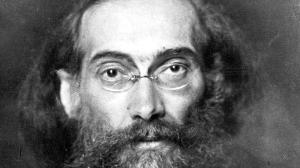
Landauer condemned the “unculture” of mechanistic capitalism and wrote that “anarchism’s lone objective is to end the fight of men against men and to unite humanity so that each individual can unfold his natural potential without obstruction”. (65)
Like Monakow, Landauer extended his concept of the organic to a cosmic level, regarding the universe as a living creature with a collective soul and writing that “the psyche [das Seelenhafte] in the human being is a function or manifestation of the infinite universe”. (66)
He rejected the idea that the onward evolution of humanity was dependent on the progress of science and proposed instead a regeneration based on social spirituality, or Geist, the collective energy animating authentic human community.
The Russian anarchist Peter Kropotkin (1842-1921) is well known for having developed the idea of mutual aid as a way of understanding human society.
He argued, against right-wing social Darwinists, that co-operation is at least as important in evolution as competition and that, therefore, human beings have the capacity to live together in a free anarchist society, based on organic solidarity, without any state control.
But, in fact, Kropotkin went even further in developing a nature-based philosophy which was similar in many ways to those of Driesch, Monakow and Goldstein.
He argues, in Ethics, that not only are we human beings physically part of nature but that our thinking, too, including our morality, arises from the same source. Nature was “the first ethical teacher of man” (67), he says, our ideas of bad and good being reflections of what our ancestors saw in animal life. (68)
“Mutual Aid-Justice-Morality are thus the consecutive steps of an ascending series, revealed to us by the study of the animal world and man. They constitute an organic necessity which carries in itself its own justification, confirmed by the whole of the evolution of the animal kingdom, beginning with its earliest stages (in the form of colonies of the most primitive organisms), and gradually rising to our civilized human communities. Figuratively speaking, it is a universal law of organic evolution, and this is why the sense of Mutual Aid, Justice, and Morality are rooted in man’s mind with all the force of an inborn instinct”. (69)
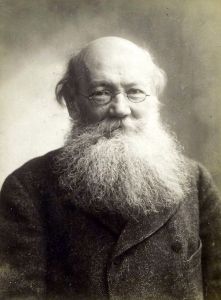
Like Tönnies, Kropotkin looks back favourably on the Middle Ages and previous societies where customs and codes served to protect the collective community from greedy or power-hungry individuals.
He does not shy away from talking about the “social organism” (70) and from expressing a classically holistic and nature-orientated view of the world. He writes, for example, that “we are compelled to acknowledge that every natural phenomenon – the fall of any particular stone, the flow of a brook, or the life of any one tree or animal, constitutes the necessary manifestation of the properties of the whole, of the sum total of animate and inanimate nature”. (71)
This should not surprise us, even if many of Kropotkin’s 21st century anarchist successors seem afraid of any talk of nature, social organisms, inborn instincts and universality.
Anarchism is a political philosophy whose revolutionary, destructive aspect only makes sense if it is backed up by this positive vision of a natural, organic society which will be set free to flourish once the state-capitalist machine is brought down.
It is, to directly answer the question at the top of this section, quite clearly the best political fit with the current of holistic and organic philosophy that we have been outlining in this article.
5. Is organic radicalism the only target of the contemporary Nazi smear?
So far we have seen that, although a certain strand of Nazi ideology was influenced by aspects of organic thinking, it was very much a departure from that tradition. In rejecting a universalist humanist vision in favour of narrow racism, these Nazi thinkers essentially turned their back on holism as a philosophy.
Their fragmented, piecemeal, divisive approach instead reflected the fragmented thinking of the industrial age which the new wave of organic thought had emerged to attack. Critiques of industrialism within the Nazi movement were almost entirely eclipsed by a pragmatic obsession with Technik and industrial advance.
Indeed, fascism looks more like a grotesque caricature of the inhuman industrial society opposed by organic thinking, a chillingly efficient 20th century upgrade of the steam-powered capitalist machine of the previous era.
So why, we might ask, do so many political writers seek to make a connection between the Nazis and anti-industrial, ecological, organic ways of thinking?
To help answer this, it is worth placing the issue in a wider context and looking at another instance in which alleged Nazi associations have been deployed as a political tool.
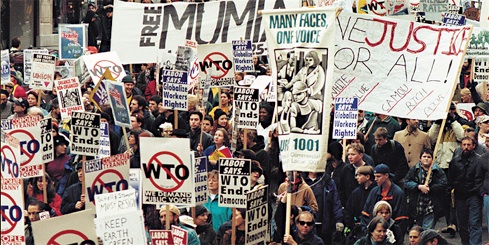
The global anti-capitalist movement, ever since the heady successes around the turn of the 21st century, has often being accused of harbouring some kind of hidden fascistic or anti-semitic tendencies.
One of the main themes of this critique was that voiced in June 1999 by the Dutch organisation “De Fabel van de illegaal” (“The myth of illegality”) which withdrew from the anti-globalization movement, complaining that it was leading left-wingers towards a kind of nationalism.
While examples were given of right-wing individuals or groups influencing the fringes of the movement, the gist of the criticism was more ideological.
De Fabel wrote back then that analyzing in terms of “international capital” or “speculation capital” is “potentially anti-Semitic”. “Potentially”, because the ideology of this kind of anti-capitalism was said to show “enormous structural similarities with anti-Semitism” even when there was no talk of “the Jews” owning international capital, as Eric Krebbers explained in 2003. (72)
In the same article, Krebbers also took issue with the solidarity with Palestinian struggles being expressed by anti-capitalists, complaining: “At the recent huge demonstrations in Italy, where the anti-globalization movement probably is the strongest, Palestine seems to have become the central point of reference. Many activists speak of ‘a worldwide intifada against globalization’ and they often shout: ‘We are all Palestinians’. Why do anti-globalization activists need to identify with ‘the Palestinians’, with some ‘nation’? Why do these inhabitants of worldpower European Union continually make out Israel and the US as ‘main imperialist enemies’?”
A similar point was made three years later, in 2002, in an article entitled ‘Anti-Globalization: The New Anti-Semitism’ which appeared on “the leading Jewish content website” aish.com.
This suggested there was an “association between the Arab world and the anti-globalization movement” which “has its roots in a common opposition to American ‘domination’. Israel and the Jews represent American capitalism”. (73)
The same line of attack was notably developed by the late Moishe Postone, an academic who detected affinities between forms of anti-capitalism and anti-semitic conspiracy theory.

The anti-elitist, anti-capitalist message of the 99 per cent against the 1 per cent, which was so central to the Occupy movement, is seen from this perspective as being a disguised attack on Jews.
If you talk about bankers and financiers running the world, controlling the media, and cheerleading for war, it is argued, you are really blaming Jewish people or, at the very least, falling into the hands of those who do.
As Daniel Finn crucially pointed out in a 2018 article in Jacobin magazine, insinuations of anti-semitism can thus be used, not merely to defame critics of Israel, but “to discredit any radical critique of capitalism or imperialism in the modern world”. (74)
6. What is the relationship between anti-capitalism and anti-semitism?
At this point it is worth lending some historical perspective to this alleged connection between anti-capitalism and anti-semitism.
Very instructive in this respect is the work of Lazare, one of Löwy’s anti-capitalist Romantics, who became known as one of the principal defenders of Alfred Dreyfus, a famous victim of institutional 19th century anti-semitism in France.
As a young man, Lazare had read socialist and anarchist literature explaining that Jews were big businessmen and capitalists, and so he decided that he himself could not possibly be ‘Jewish’, even if he remained an ‘Israelite’.
He wrote in 1890, at the age of 25: “The Jew (there are many who become Jews, without being destined by their race to do so, but who are rather doomed by their native virtues) is someone who is dominated by the sole preoccupation of making a quick fortune, which he will more easily obtain by fraud, lies and cunning. He despises virtue, poverty, selflessness”. (75)
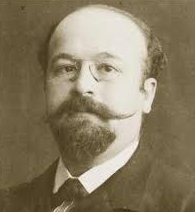
Lazare was therefore driven into an absurd form of anti-semitism by the social stereotype of the Jew as a capitalist – any anti-capitalist, it appeared even for this young Jew, therefore had to be anti-‘Jewish’.
Wertheimer was later to comment on this phenomenon in his 1935 essay on ethics. Here he describes “a young, idealistic party member” – Nazi Party, that is – who is “passionate in the negative evaluation of members of a certain race” – in other words, of Jews.
Wertheimer adds: “This young man perhaps behaves thus only because he has been brought to this state through suggestion, propaganda, through the wanton slander that this race is a poisonous snake. He does not really behave with respect to A (members of this race) but to a B which he has been taught to identify with this race”.
In other words the young idealist is instinctively opposed to capitalism, usury, greed or whatever other negative qualities have been ascribed to Jews by the Nazis. Because of their anti-semitic propaganda, he associates these negative qualities entirely with Jews and is thus turned into an anti-semite, even though he did not necessarily originally bear any ill will towards Jews as such.
Says Wertheimer: “The real problem here lies not only in the behaviour of the young man, but in the enforcement of the blind identification… To take away by artifice the possibility of seeing the true situation, through the enforcement of blind judgments, of improper narrowing of the mental field, induction of blind centering, deprives man of the prerequesites for our problems”. (76)
While a non-Jew might find themselves stuck in this induced anti-semitism, Lazare’s own Jewishness enabled him to quickly realise that what he really disliked were the materialistic and greed-driven capitalist attitudes which made life a misery both for non-Jews and for ‘Israelites’ like himself.
He wrote in another essay: “There are now thousands of Jewish workers in France, exploited like the Christians, dying of hunger like the Christians, unhappy like the Christians. They are also there in England, in Germany, in Russia…” (77)
As he matured, Lazare asked himself why it was that the sins of capitalism were conventionally heaped on this scapegoat figure of the archetypal Jew.
He noted, in an 1892 article entitled ‘Jews and Anti-Semites’ that when “liberal anti-semites” declared war on the Jews they claimed to be opposing crooked financiers. But, in fact, they were targeting anyone who was circumcised or went to the synagogue, including workers. (78)

Increasingly Lazare saw this phenomenon as one carefully fabricated by the upper classes. They used the stereotype of the greedy materialistic Jew to divert attention and anger away from their own greedy materialism.
Anti-semitism, he wrote in 1899, “is good for vicars, reactionaries and the bourgeoisie, because they are the only ones who can – or who hope – to gain from it; they rely on it to dodge the blows coming their way and to solidify their power”.
He added: “Beware of those pseudo-socialists who tell you that if your wages are too low, the fault lies with foreign workers and Jews, and that you’ll be happier when
they’ve all been kicked out. How the bourgeois would laugh if he could set you against your brothers in misery, against your companions in chains, so as to save his own skin”. (79)
Lazare refuted the supposed link between materialism and Jewishness and pointed out that there were plenty of Christian capitalists around, not least the Roman Catholic Church, which even had its own banking wing. Indeed, he suggested, the influence of Roman civilization was in fact behind many of the social ills blamed on Jews. “The deification of money, capitalist barbarity, ignorance of all human interest other than the financial or commercial interest, are the traits of the Roman soul, but not of the Jewish soul”. (80)
Lazare thus clearly explained the way that anti-semitism was used, by the ruling classes, as a way of deflecting attention away from the fundamental problems and injustices of their hierarchical industrial capitalist society and of shunting opposition into a sordid dead end of racial scapegoating.
He died in 1903, but he would surely have identified exactly the same processes at work in Nazi Germany. The Nazis were used by the ruling classes to save Germany from a genuine rebellion against industrial capitalism.
People’s natural and healthy animosity towards profiteering materialism, towards the commercialisation of society, was deliberately hijacked and diverted into anti-semitism, leaving the field clear for German capitalism to storm ahead under the Nazi banner.

The key element which allowed this scapegoating to take place was, obviously, the equation of Jewishness with capitalism, materialism and so on – the fake definition which had confused the young Lazare.
To stop it ever resurging, it would therefore seem crucial to break that link, to demolish the lie that capitalism was the property of any one people, nation or religion.
However, unfortunately, the Jewish stereotype lives on today. Even more unfortunate is that it is often kept alive by people who are ostensibly countering anti-semitism.
As we have seen, left-wingers who criticise bankers, industrialists and capitalist organisations are sometimes accused of deploying a “coded” form of anti-semitism.
Now, perhaps those making the allegations are justified in fearing a return of the scapegoating of Jews under the pretext of anti-capitalism. But it is beyond dispute that in automatically equating opposition to the global banking system with anti-semitism, they are in fact reinforcing the old stereotypes.
What appears to be happening, in some cases at least, is that the “Jewish banker” figure is again being deliberately deployed to thwart opposition to capitalism.
Previously, it was used to steer people away from anti-capitalism and into anti-semitism, but now the aim is rather to steer people away from anti-capitalism with the threat of being labelled anti-semitic.

The aim of this ideological scaremongering is not, in fact, to combat anti-semitism, but to use the smear of anti-semitic associations as a means of discrediting opposition to the dominant economic system.
In other words, capitalists, in the past, deliberately whipped up anti-semitism to protect themselves from popular fury (as Lazare outlines) and their successors are now differently – but equally dishonestly – using the spectre of that very same anti-semitism to protect themselves from a 21st century wave of anti-capitalist anger.
7. So what, do we conclude, is the smear all about?
There are several factors that might lie behind the way that radical ecological thinking is sometimes tarred with Nazi associations – wrongly, as we have established.
One is that there is a genuine fear that organic language could again be co-opted and diverted into a sinister direction by modern-day fascists. The trauma inflicted by Nazism remains so intense, more than 70 years later, that terms (mis-)used by its adherents in the past are still capable of triggering fearful reactions.
Another possible cause for the misunderstanding may lie in the way that our civilization and culture have drifted ever further from a nature-based understanding of humankind, and the organic approach is thus faced with a concrete wall of non-comprehension, which leaves the way clear for all kinds of misinterpretations of the intentions behind its approach.
Most likely is that both these factors have played a role and that they have combined to reinforce a still-more important element – a deliberate attack on the deep green, organic, ideology.
The aim of this would be, like the anti-semitism accusations described by Finn, “to discredit any radical critique of capitalism or imperialism in the modern world”.
As with the anti-semitism smears, the “eco-fascism” accusation is presented as a noble attempt to stop a new form of fascism from arising, thus seeking the support and gratitude of people who fear that very outcome.
But, in reality, it is a cynical ploy designed to attack anti-capitalist thought from behind the safe smokescreen of anti-fascism.
It has just enough evidence (of the superficial similarities of rhetoric we have discussed, of various right-wing extremists trying to co-opt deep green thought, etc) to make the claim sound plausible for those who do no further research of their own, but the accusation is fundamentally disingenuous.

To understand what is happening we need to go back to the 19th century, at the time when Organic Thinking II was developing. It was, as we have said, a reaction against The Machine in all its guises, against the industrial capitalist system that was destroying communities, countryside, everything that was worthwhile, authentic, beautiful and everlasting about our world.
To counter this opposition, The Machine (by which we mean a theoretical collective entity consisting of all the individuals who worked for it and with it) disguised itself as something other than the exploitative, destructive, inhuman, monstrous phenomenon that it really was.
Everywhere it depicted itself as representing “progress”, “prosperity”, “scientific advance” and so on and its enemies as backward-looking barbarians, stuck-in-the-mud reactionaries and dim-witted Luddites.
In German-speaking Europe, this Machine also managed to recuperate part of the very movement which had emerged to oppose it by stealing parts of its language – in the same way that capitalism recuperated punk music, for instance, or that Tony Blair’s New Labour used the language of social democracy to gain power for a neoliberal clique.
The promotion of communal Gemeinschaft, social organism and mutual aid against mechanistic industrial capitalism was transformed into a narrow racism and nationalism which diverted criticism of capitalism on to Jews and foreign powers, leaving the industrial capitalist system in Germany very much intact.
Fascism was, as we have seen, nothing but a reincarnation of The Machine itself.
It was not the only incarnation, though – and after defeating fascism, and using some of its know-how and personnel in its struggle against Soviet communism, the US/UK branch of the Machine was keen to present itself as the world’s great defender of democracy.
But by “defending democracy” what they really mean is repelling all threats to the continuation of their military-industrial-economic-prison-complex, the capitalist Machine.
In the language of contemporary “centrist” neoliberals, any political position which challenges their version of capitalism is necessarily “extremist”. They like to claim that extreme right and far left are essentially the same thing; a “red-brown” alliance against the neoliberal democratic values enshrined and protected by the USA and its allies.
This is the context in which anti-capitalism is equated with anti-semitism and in which deep green organic thinking is equated with fascism.
The Machine which we face today is indisputably the same Machine which provoked the anti-industrial, anti-capitalist philosophical revolt of the 19th century. There is an unbroken continuity there.

And that Machine, which in its fascist guise co-opted organic terminology for its own ends, is now happy to use that co-option, that misuse of organic language by the
fascists, to try to discredit the original, non-fascist, organic philosophy by a fake association with fascism.
It aims to disqualify organic/holistic thought, a philosophy which threatens the domination of its industrial capitalist system.
To do this it will use which ever means seems most effective – and the “Nazi” smear is the perfect weapon.
The immensity of this ideological deceit becomes even clearer if we look again at what it is that we, today, particularly dislike about Nazism. It is, as we said, the mass extermination, the anti-semitism and racism, the warmongering militarism, the police state, the blind nationalism, the eugenics, the propaganda and mass hysteria.
Which of those elements is present in deep green organic thinking? None of them! How can you accuse an ideological current of being “fascist” or “eco-fascist” if it doesn’t contain the ideological elements typical of fascism?

Now let’s look at the industrial capitalist system. How does that compare with the Nazi model? Warmongering militarism? Yes. Police state? Yes. Propaganda and mass hysteria? Yes. Blind nationalism? Yes, despite its global character, capitalism is always happy to use this to rally the public. Eugenics? Yes, although they don’t call it that these days. Cold inhumanity? Yes. Racism? Very much so.
Anti-semitism? Although anti-semitism exists in our society, it is not systematically encouraged by the ideology of industrial capitalism. It is, however, systemically abused, as we have seen – being turned into an ideological weapon to be used not principally against anti-semites, but against anti-capitalists. The victims of this cheap weaponising of the term will be those who find it leaves them horribly exposed to the real thing.
Contemporary capitalism has not yet plumbed the depths of depravity achieved by the Hitler regime and operated mass extermination camps, but that is pretty much the only way in which it can claim any moral high ground over Nazism.
In other respects, it shares the thinking of the Nazi Machine, which is not surprising because it is essentially the same Machine. It is obsessed with industrialisation, production, technology and war. It regards people as human resources, as labour units, as consumers, as cannon fodder and as collateral damage. Its thinking is utilitarian, fragmented, non-holistic. It is cold, mechanical, exploitative. Its own inner logic of self-interest blinds itself to all morality, ethics, humanity.
And this system dares accuse its opponents of being “fascist”?
8. Why do we care so much about this issue?
Why open this particular can of worms about supposed fascist influences on organic, nature-based ideology? Why do we think this issue is so important that we feel the need to address it in this article?
There are two aspects involved here. The first is that we are concerned at the adverse effects the “Nazi” smears, and the fear of such smears, have had on radical thinking.
There are, again, strong parallels with the “anti-semitic” smears levelled against some forms of anti-capitalism.
The aim of equating talk of “the one per cent” with anti-semitism is presumably to deter people from drawing attention to the existence of a very real capitalist ruling class.
Instead, anti-capitalists are supposed to address the matter in a convoluted, theoretical way which may make sense to postmodern academics but is never going to spark a wave of public support in the way that the direct approach can.
In radical environmental circles it likewise becomes impossible to talk about nature, a return to the land or organic communities without someone like Staudenmaier popping up to identify a “chilling” resemblance to Nazi thought.
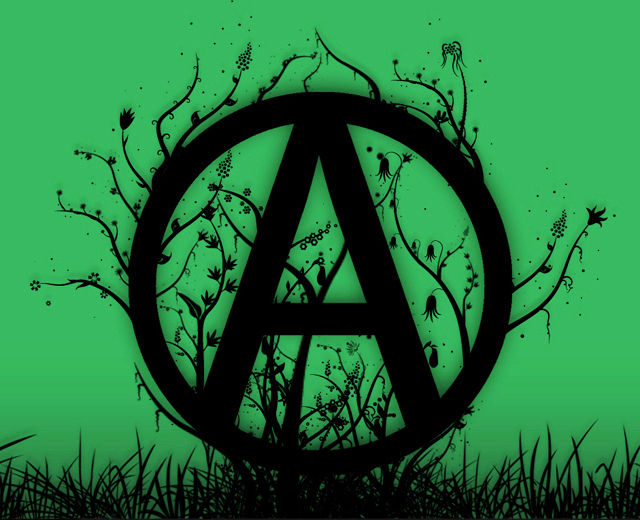
This simply rips the heart out of the ideology, destroying its fundamental coherency. How can we criticise modern capitalist society, and propose a radical alternative, if the language in which we do so has been ruled out of bounds by some kind of ideological thought police?
Instead of getting to the core of the problem with industrial capitalism, and everything that goes along with it, people are forced to retreat into positions which do not fundamentally challenge capitalism.
Either they end up accepting its claims that we “need” economic growth, never-ending technological progress and so on, or they adopt superficial nihilistic approaches which condemn capitalism without being able to propose an authentic alternative.
The second aspect of the problem relates to the ideological gap left by the abandonment of organic anti-capitalist thinking by left-wingers scared off by the smear campaigns.
Just because those ideas are not being expressed in certain circles, does not mean that they do not exist, or that they will magically be stopped from taking shape in people’s minds.
Imagine a young person who feels aesthetically revolted by the capitalist society in which they have been brought up – by its materialism, environmental destruction, fragmentation and consumer shallowness.
In contrast to all of that, this young person imagines a different world, a world where people live more simply and sanely, in small communities imbued with healthy
values, feeling a strong connection to the land and to the other creatures who live on it.
This young person looks around for other people saying the same thing, for a movement which voices those ideals and seeks to realise them.

The ideology they are looking for is organic radicalism, green anarchy, but maybe, thanks to the efforts of the ideological thought police, this ideology is no longer visible.
Imagine that there is, however, a group expressing some of these ideas in a slightly different way. They talk of going back to the land, building healthy small-scale communities and of respecting nature. The only thing is that they also talk a lot about kinship and ethnic identity, which our young person is not quite sure about, but feels is perhaps just one detail that they can learn to live with.
Later, the new recruit discovers that this movement has been exposed as extreme right-wing and fiercely criticised. But because the criticisms come from a left-wing movement which seems to reject all of the young person’s ideals, they fall on deaf years. “If these ideas are extreme right-wing ideas,” they think to themselves, “then I myself must naturally belong to the extreme right”.
This is roughly the same process that led Lazare, a Jew, into expressing anti-semitic ideas because he had swallowed the lie equating capitalism and Jewishness and the process that Wertheimer depicts twisting the mind of the young Nazi idealist.
Maybe in due course our young person will, like Lazare, see through the emptiness and inhumanity of fascist rhetoric and walk away from it in order to rebuild their own personal philosophy on a healthier basis, but that is far from being sure.
The damage will already have been done by the way the left has turned its back on a deep critique of capitalism with a powerful vision of an alternative society.
This, in fact, is what happened a hundred years ago, when much of the left, particularly in German-speaking Europe, had abandoned a nature-based, holistic anti-capitalism in favour of an industrially-orientated Marxism. (81)

Juan J. Linz, in ‘Some Notes Toward a Comparative Study of Fascism in Sociological Historical Perspective’ explains that “the lack of understanding of traditional Marxist theory and especially Central European social democracy for the plight of the peasant and pre-industrial strata” (82) left the way clear for Nazi recruitment. “A romantic youth protest against bourgeois society was captured by the fascists,” (83) he adds.
Landauer was very aware of this problem. Berman and Luke explain that he saw the need for society to break free from “the false mechanical concepts of science that impoverish human understanding” (84) but understood that Marxism was itself trapped inside this mindset, with its “scientific” belief in the supposedly inevitable transition of capitalism into socialism.
This meant orthodox Marxists had to applaud capitalist growth and capitalist progress. “In the light of Landauer’s critique, nineteenth century scientific socialism ceases to appear as a radical critique of the status quo. Rather, behind its revolutionary pretenses, it buttresses the development of capitalist structures”. (85)
In failing to take up the Romantic struggle against industrial capitalism, building on the rich organic and holistic philosophy which was being developed in German-speaking lands, the Marxists allowed this powerful anti-capitalist current to flow into the stagnant waters of fascism.
It is now time to develop Organic Thinking III, a 21st century version of the ideology that is not only anti-industrial and anti-capitalist, but specifically anti-fascist.
Comment Berman and Luke: “The turn of völkisch thought to the right is ultimately not indicative of the quality of such thought, but rather of the self-imposed constraints of the traditional Marxist left, which failed to appropriate the leftist potential of the völkisch movement”. (86)
The Marxist left of that place and period had become sterile and dogmatic and shied away from appealing to those who wanted to fundamentally challenge the assumptions and infrastructures of capitalist society, who were ready to embark on a total revolt against the Gesellschaft of state and business.
As Sternhell notes: “With their thirst for action for action’s sake and struggle for struggle’s sake, the fascists appeared to be the only authentically revolutionary political organizations, the only movements unconditionally opposed to the established order, the only people whose revolutionary credibility – unlike that of the parties of the left, including the communist parties – had not been damaged by compromise”. (87)
It is ironic that contemporary leftists are being urged to steer clear of emotive anti-capitalism and nature-based organic environmentalism, because of an alleged taint by Nazi associations, when it was actually a previous left-wing generation’s drift in that very same direction – its abandonment of authentic anti-capitalist ideals – which allowed the Nazis to co-opt and distort those ideals for their own dishonest ends.
9. What would we like to see happen next?
Antidote zine, the American website which reposted our Envisioning a Post-Western World article, commented that “it behooves people in contested cultural terrain to, well, contest it”. (88)
This is what we would like to see happen next. We would like to see the terrain of organic ideology contested with the aim of lifting the Nazi curse which has stifled its voice and restoring it to its rightful role as the ideological heart of anarchist and anti-capitalist thinking.
We wrote above that the holistic philosophy which emerged in the 19th and early 20th century was a kind of Organic Thinking II, because it had added a specifically anti-industrial and anti-capitalist layer on top of the older holistic heritage.
It is now time to develop Organic Thinking III, a 21st century version of the ideology that is not only anti-industrial and anti-capitalist, but specifically anti-fascist.
The reasons for this should by now be obvious. By clearly defining and explaining itself as anti-fascist, Organic Thinking III can not only shake off the smears with which Organic Thinking II has been attacked, but also shed light on the real successor to fascist ideology – the authoritarian, militaristic, racist, industrialist, science-obsessed, capitalist Machine.

It will condemn fascism not for being the “religion of nature” that it never really was, but for being the epitome of industrialism, the death-cult military-technocratic system pushed to its brutal limits.
Organic Thinking III will include the awareness that the Machine has tried to destroy anti-capitalist organicism by tarring its language with the broad brush of a deliberately misinterpreted fascism.
It will relaunch the ideological war on industrial capitalism begun by Organic Thinking II, but inoculate itself against a new take-over bid by the extreme right by placing at its core the left-wing values of humanity, solidarity, compassion and universality.

It will declare itself an implacable enemy of fascism and present a coherent and self-contained organic political vision that could never be acceptable to fascists – one fuelled by the ideas of anarchists, non-nationalist socialists and Jews, from Morris to Goldstein, from Monakow to Kropotkin, from Tönnies to Wertheimer, from Landauer to Roszak.
It will be unflinching in its complete rejection of this capitalist-fascist system in all respects – its economics, its infrastructures and its ideology.
It will condemn all the new forms being taken by fascism – the sinister techno-totalitarianism of genetic engineering, nanotechnology, surveillance, drone warfare and transhumanism.
It will challenge head-on the productivist obsession with quantity over quality, with profit, with economic growth, with “progress” and it will call for a society built on ethics, values, humanity and solidarity.
It will favour the authentic over the artificial, the beautiful over the ugly, the living over the sterile.
It will understand the distinction between Gemeinschaft and Gesellschaft, as set out by Tönnies, and struggle for the revival of the former.
It will pay no heed to the demands of authority, with its states, currencies, laws, police forces, armies, courts, prisons and concentration camps.
It will reject the mercantile mindset and seek to build a society based on exchange, mutual aid and common interest, where food is grown and objects are produced on the basis of collective need rather than for private gain.
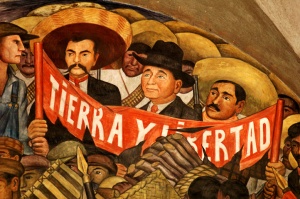
It will refuse the false construct of land ownership, recognising the land as something to which we belong, rather than as something which could ever belong to us.
It will go beyond contemporary society’s toxic separation of body and mind and embrace the holistic reality of our being.
It will likewise embrace the holistic unity of humankind and insist that within that unity all borders are fluid, all particularisms imbued with the universal human essence.
It will condemn the arrogance of Western civilization in imposing its structures and ideology on the rest of the world and find inspiration and alliance with peoples everywhere seeking to protect or restore non-Western, non-capitalist, ways of living and thinking.
It will acknowledge that humankind is nothing but part of nature and that our future can only be healthy in the context of a healthy natural world, free from pillage, pollution and destruction.
It will understand that human well-being depends on individuals acting as part of a greater whole, a social organism.
It will know that these individuals can only be free within a free community and that this free community must always be made up of free individuals.
It will break through all the lies and taboos to spread the message that the planetary destruction being wreaked by the industrial capitalist system must be stopped.
It will inspire people to dream, to hope, to speak out, to discuss, to write, to mobilise and to turn their ideas into action.
One day it will bring down The Machine – the industrial, capitalist, fascist Machine – and clear the way for natural life once more to flourish

Link to original article: Here
1. Ernst Lehmann, Biologischer Wille. Wege und Ziele biologischer Arbeit im neuen Reich, (Munich: J.F.Lehmann, 1934), cit. Anne Harrington, Reenchanted Science: Holism in German Culture from Wilhelm II to Hitler (Princeton, NJ: Princeton University Press, 1999), p. 177.
2. https://www.encounterbooks.com/features/rupert-darwall-totalitarian-roots-environmentalism/
3. https://theanarchistlibrary.org/library/janet-biehl-and-peter-staudenmaier-ecofascism-lessons-from-the-german-experience
4. www.akpress.org/against-the-fascist-creep.html
5. www.redpepper.org.uk/darker-shades-of-green/
6. Anna Bramwell, Ecology in the Twentieth Century: A History (New Haven: Yale University Press, 1989), pp. 272-73.
7. Anna Bramwell, The Fading of the Greens: The Decline of Environmental Politics in the West (New Haven & London: Yale University Press, 1994), p. 43.
8. https://antidotezine.com/2017/08/19/envisioning-a-post-western-world/
9. Vivianne Crowley, Wicca: The Old Religion in the New Millennium (London: Thorsons, 1996), p. 32
10. William Morris, ‘How I Became A Socialist’, News From Nowhere and Selected Writings and Designs, ed. by Asa Briggs (London: Penguin, 1984), p. 36.
11. Georges Bernanos, ‘La France contre les robots’, cit. Aux origines de la décroissance – Cinquante penseurs, coordonné par Cédric Biagini, David Murray, Pierre Thiesset (Paris: L’Échappée, 2017), p. 28.
12. Harrington, pp. xvii-xviii.
13 Harrington, p. 20.
14. Nina Lyon, Uprooted: On the Trail of the Green Man (London: Faber & Faber, 2016), p. 192.
15. F. Sander, ‘Deutsche Psychologie und nationalsozialistische Weltanschauung’. Nazionalsozialistisches Bildungswesen. 2. pp. 641-643, cit. Harrington, p. 178.
16. Lehmann, cit. Harrington, p. 177.
17. Harrington, p. 188.
18. cit. Harrington, p. 175.
19. Zeev Sternhell, ‘Fascist Ideology’, Fascism: A Reader’s Guide. Analyses, Interpretations, Bibliography, ed. Walter Laqueur (Aldershot: Scolar Press, 1991), p. 356.
20. Rudolf Rocker, Anarcho-Syndicalism (London: Pluto Press, 1989), p. 75.
21. Harrington, p. 182.
22. Sternhell, pp. 324-35.
23. Harrington, p. 181.
24. Alfred Böttcher, 1935, ‘Die Lösung der Judenfrage’, Ziel und Weg 5: 226. cit Harrington, pp. xx-xxi.
25. Johann Chapoutot, La révolution culturelle nazie (Paris: Gallimard, 2017),
p 83.
26. Primo Levi, Survival in Auschwitz: The Nazi Assault on Humanity, trad. Stuart Woolf (New York: Simon & Schuster, 1996), p. 105.
27. Chapoutot, p. 79.
28. Chapoutot, p. 85.
29. Harrington, p. 189.
30. Gerhard Portele, ‘Gestalttheorie und Wissenschaftstheorie. Pläyoder für eine alternative Wissenschaft’, Gestalt Theory I (I), pp. 26-38, cit. Harrington, p. 211.
31. Harrington, p. 195.
32. NSDAP’s Mitteilungen zur weltanschaulichen Lage, Nov 27, 1936, cit. Harrington, p. 196.
33. Harrington, pp. 197-98.
34. Lyon, p. 192.
35. Harrington, p. xxi.
36. Harrington, p. 62.
37. Harrington, p. 190.
38. Harrington , p. 92.
39. Harrington, p. 98.
40. Harrington, p. 172.
41. Ruth Nanda Anshen, ‘Open letter to Dr Kurt Goldstein in commemoration of his eightieth birthday, November 6, 1958, Goldstein Papers, cit. Harrington, p. 172.
42. Max Wertheimer, ‘On truth’, Social Research 1 (2), cit. Harrington, pp. 133-34.
43. Max Wertheimer, ‘Some problems in the theory of ethics’, Social Research 2 (3), cit. Harrington, p. 134.
44. Michael Löwy, Juifs hétérodoxes: Romantisme, messianisme, utopie (Paris: Éditions de l’éclat, 2010), p. 23.
45. Löwy, Juifs hétérodoxes, pp. 33-34.
46. Michael Löwy, Rédemption et utopie: le judaïsme libertaire en Europe centrale, (Paris: Editions du Sandre, 2009), p. 74.
47. Löwy, Juifs hétérodoxes, p. 82.
47. Löwy, Juifs hétérodoxes, pp. 82-83.
48. Löwy, Juifs hétérodoxes, p. 36
49. Löwy, Juifs hétérodoxes, p. 121.
50. Ferdinand Tönnies, Community and Society: Gemeinschaft und Gesellschaft, trad. Charles P. Loomis (New York: Dover Publications, 2002), p. 34.
51. Tönnies, p. 35.
52. Tönnies, p. 36.
53. Tönnies, p. 121.
54. Tönnies, p. 89.
55. Tönnies, p. 83.
56. Tönnies, p. 202.
57. Tönnies, pp. 227-28.
58. Tönnies, p. 216.
59. Tönnies, p. 225.
60. Tönnies, p. 208.
61. Tönnies, pp. 230-31.
62. Theodore Roszak, Where the Wasteland Ends: Politics and Transcendence in Postindustrial Society (New York: Doubleday, 1972), p. 424.
63. Roszak, pp. 95-96.
64. Russell Berman & Tim Luke, ‘Introduction’, Gustav Landauer, For Socialism, trans. by David J Parent (St Louis: Telos Press, 1978), p. 8.
65. Gustav Landauer, Revolution and Other Writings: A Political Reader, ed. and trans. by Gabriel Kuhn (Oakland: PM Press, 2010), p. 22.
66. Gustav Landauer, Skepsis und Mystik: Versuche im Anschluss an Mauthners Sprachkritik (Cologne: 2d ed, 1923), p. 7, cit. Charles B Maurer, Call to Revolution. The Mystical Anarchism of Gustav Landauer (Detroit: Wayne State University Press, 1971), p. 69.
67. Peter Kropotkin, Ethics: Origin and Development (Dorchester: Prism Press, n/d) p. 45.
68. Kropotkin, pp. 16-17.
69. Kropotkin, pp. 30-31.
70. Kropotkin, p. 18.
71. Kropotkin, p. 87.
72. https://www.doorbraak.eu/gebladerte/30046v01.htm
73. http://www.aish.com/jw/me/48898397.html
74. https://www.jacobinmag.com/2018/04/jeremy-corbyn-antisemitism-labour-party
75. Bernard Lazare, ‘Juifs et Israélites’, La Question Juive (Paris: Éditions Allia, 2012), p. 26.
76. Wertheimer, ‘Some problems in the theory of ethics’, cit. Harrington, p. 135.
77. Lazare, ‘La Solidarité Juive’, p. 41.
78. Lazare, ‘Juifs et Antisémites’, p. 58
79. Lazare, ‘Antisémitisme et révolution’, p. 84.
80. Lazare, ‘Conception Sociale du Judaïsme’, p. 185.
81. See Paul Cudenec, The Stifled Soul of Humankind (Sussex: Winter Oak, 2014).
82. Juan J. Linz, ‘Some Notes Toward a Comparative Study of Fascism in Sociological Historical Perspective’, Fascism: A Reader’s Guide, p. 17.
83. Linz, p. 19.
84. Berman & Luke, p. 7.
85. Berman & Luke, p. 11.
86. Berman & Luke, p. 8.
87. Sternhell, p. 343.
88. https://antidotezine.com/2017/09/19/envisioning-a-post-western-world/
1. Ernst Lehmann, Biologischer Wille. Wege und Ziele biologischer Arbeit im neuen Reich, (Munich: J.F.Lehmann, 1934), cit. Anne Harrington, Reenchanted Science: Holism in German Culture from Wilhelm II to Hitler (Princeton, NJ: Princeton University Press, 1999), p. 177.
2. https://www.encounterbooks.com/features/rupert-darwall-totalitarian-roots-environmentalism/
3. https://theanarchistlibrary.org/library/janet-biehl-and-peter-staudenmaier-ecofascism-lessons-from-the-german-experience
4. www.akpress.org/against-the-fascist-creep.html
5. www.redpepper.org.uk/darker-shades-of-green/
6. Anna Bramwell, Ecology in the Twentieth Century: A History (New Haven: Yale University Press, 1989), pp. 272-73.
7. Anna Bramwell, The Fading of the Greens: The Decline of Environmental Politics in the West (New Haven & London: Yale University Press, 1994), p. 43.
8. https://antidotezine.com/2017/08/19/envisioning-a-post-western-world/
9. Vivianne Crowley, Wicca: The Old Religion in the New Millennium (London: Thorsons, 1996), p. 32
10. William Morris, ‘How I Became A Socialist’, News From Nowhere and Selected Writings and Designs, ed. by Asa Briggs (London: Penguin, 1984), p. 36.
11. Georges Bernanos, ‘La France contre les robots’, cit. Aux origines de la décroissance – Cinquante penseurs, coordonné par Cédric Biagini, David Murray, Pierre Thiesset (Paris: L’Échappée, 2017), p. 28.
12. Harrington, pp. xvii-xviii.
13 Harrington, p. 20.
14. Nina Lyon, Uprooted: On the Trail of the Green Man (London: Faber & Faber, 2016), p. 192.
15. F. Sander, ‘Deutsche Psychologie und nationalsozialistische Weltanschauung’. Nazionalsozialistisches Bildungswesen. 2. pp. 641-643, cit. Harrington, p. 178.
16. Lehmann, cit. Harrington, p. 177.
17. Harrington, p. 188.
18. cit. Harrington, p. 175.
19. Zeev Sternhell, ‘Fascist Ideology’, Fascism: A Reader’s Guide. Analyses, Interpretations, Bibliography, ed. Walter Laqueur (Aldershot: Scolar Press, 1991), p. 356.
20. Rudolf Rocker, Anarcho-Syndicalism (London: Pluto Press, 1989), p. 75.
21. Harrington, p. 182.
22. Sternhell, pp. 324-35.
23. Harrington, p. 181.
24. Alfred Böttcher, 1935, ‘Die Lösung der Judenfrage’, Ziel und Weg 5: 226. cit Harrington, pp. xx-xxi.
25. Johann Chapoutot, La révolution culturelle nazie (Paris: Gallimard, 2017),
p 83.
26. Primo Levi, Survival in Auschwitz: The Nazi Assault on Humanity, trad. Stuart Woolf (New York: Simon & Schuster, 1996), p. 105.
27. Chapoutot, p. 79.
28. Chapoutot, p. 85.
29. Harrington, p. 189.
30. Gerhard Portele, ‘Gestalttheorie und Wissenschaftstheorie. Pläyoder für eine alternative Wissenschaft’, Gestalt Theory I (I), pp. 26-38, cit. Harrington, p. 211.
31. Harrington, p. 195.
32. NSDAP’s Mitteilungen zur weltanschaulichen Lage, Nov 27, 1936, cit. Harrington, p. 196.
33. Harrington, pp. 197-98.
34. Lyon, p. 192.
35. Harrington, p. xxi.
36. Harrington, p. 62.
37. Harrington, p. 190.
38. Harrington , p. 92.
39. Harrington, p. 98.
40. Harrington, p. 172.
41. Ruth Nanda Anshen, ‘Open letter to Dr Kurt Goldstein in commemoration of his eightieth birthday, November 6, 1958, Goldstein Papers, cit. Harrington, p. 172.
42. Max Wertheimer, ‘On truth’, Social Research 1 (2), cit. Harrington, pp. 133-34.
43. Max Wertheimer, ‘Some problems in the theory of ethics’, Social Research 2 (3), cit. Harrington, p. 134.
44. Michael Löwy, Juifs hétérodoxes: Romantisme, messianisme, utopie (Paris: Éditions de l’éclat, 2010), p. 23.
45. Löwy, Juifs hétérodoxes, pp. 33-34.
46. Michael Löwy, Rédemption et utopie: le judaïsme libertaire en Europe centrale, (Paris: Editions du Sandre, 2009), p. 74.
47. Löwy, Juifs hétérodoxes, p. 82.
47. Löwy, Juifs hétérodoxes, pp. 82-83.
48. Löwy, Juifs hétérodoxes, p. 36
49. Löwy, Juifs hétérodoxes, p. 121.
50. Ferdinand Tönnies, Community and Society: Gemeinschaft und Gesellschaft, trad. Charles P. Loomis (New York: Dover Publications, 2002), p. 34.
51. Tönnies, p. 35.
52. Tönnies, p. 36.
53. Tönnies, p. 121.
54. Tönnies, p. 89.
55. Tönnies, p. 83.
56. Tönnies, p. 202.
57. Tönnies, pp. 227-28.
58. Tönnies, p. 216.
59. Tönnies, p. 225.
60. Tönnies, p. 208.
61. Tönnies, pp. 230-31.
62. Theodore Roszak, Where the Wasteland Ends: Politics and Transcendence in Postindustrial Society (New York: Doubleday, 1972), p. 424.
63. Roszak, pp. 95-96.
64. Russell Berman & Tim Luke, ‘Introduction’, Gustav Landauer, For Socialism, trans. by David J Parent (St Louis: Telos Press, 1978), p. 8.
65. Gustav Landauer, Revolution and Other Writings: A Political Reader, ed. and trans. by Gabriel Kuhn (Oakland: PM Press, 2010), p. 22.
66. Gustav Landauer, Skepsis und Mystik: Versuche im Anschluss an Mauthners Sprachkritik (Cologne: 2d ed, 1923), p. 7, cit. Charles B Maurer, Call to Revolution. The Mystical Anarchism of Gustav Landauer (Detroit: Wayne State University Press, 1971), p. 69.
67. Peter Kropotkin, Ethics: Origin and Development (Dorchester: Prism Press, n/d) p. 45.
68. Kropotkin, pp. 16-17.
69. Kropotkin, pp. 30-31.
70. Kropotkin, p. 18.
71. Kropotkin, p. 87.
72. https://www.doorbraak.eu/gebladerte/30046v01.htm
73. http://www.aish.com/jw/me/48898397.html
74. https://www.jacobinmag.com/2018/04/jeremy-corbyn-antisemitism-labour-party
75. Bernard Lazare, ‘Juifs et Israélites’, La Question Juive (Paris: Éditions Allia, 2012), p. 26.
76. Wertheimer, ‘Some problems in the theory of ethics’, cit. Harrington, p. 135.
77. Lazare, ‘La Solidarité Juive’, p. 41.
78. Lazare, ‘Juifs et Antisémites’, p. 58
79. Lazare, ‘Antisémitisme et révolution’, p. 84.
80. Lazare, ‘Conception Sociale du Judaïsme’, p. 185.
81. See Paul Cudenec, The Stifled Soul of Humankind (Sussex: Winter Oak, 2014).
82. Juan J. Linz, ‘Some Notes Toward a Comparative Study of Fascism in Sociological Historical Perspective’, Fascism: A Reader’s Guide, p. 17.
83. Linz, p. 19.
84. Berman & Luke, p. 7.
85. Berman & Luke, p. 11.
86. Berman & Luke, p. 8.
87. Sternhell, p. 343.
88. https://antidotezine.com/2017/09/19/envisioning-a-post-western-world/